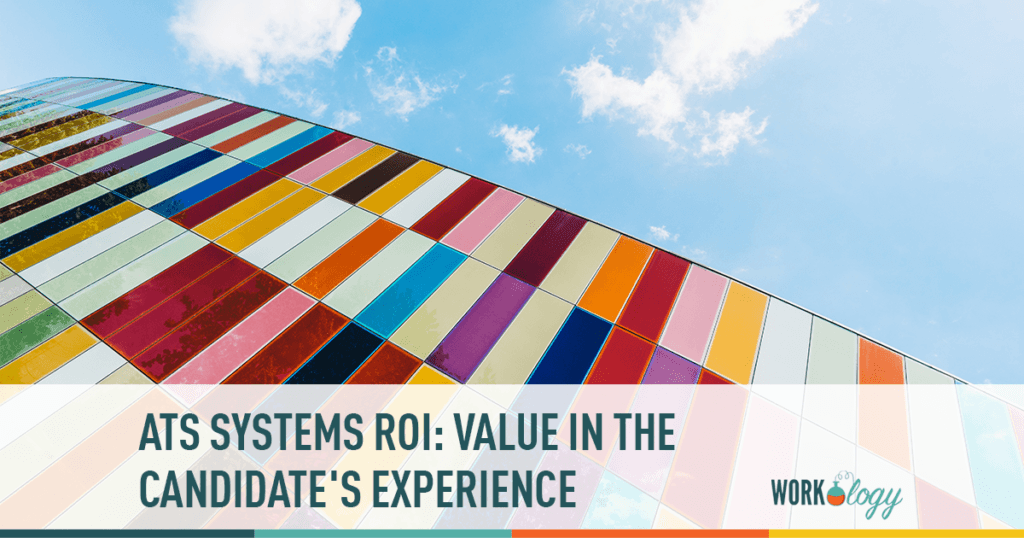When buying any new piece of software, it’s always important to think about the business case and why your company should be shelling out money to make the purchase in the first place.
ATS Systems ROI: Value in the Candidate’s Experience
While most of us believe that having an applicant tracking system is table stakes for your HR team to do its job, it’s still important to think about how this solution will add value to your organization. This is especially true if you’re going to want money for a higher end ATS that costs a premium to what you might pay for a “standard” solution.
With that in mind, here’s one major way that a new ATS will add value to your recruiting efforts, along with how we can translate that value into dollars and cents.
Improving The Candidate Experience
It used to take 20 minutes to apply for a job, minimum. You had to fill out form after form of information that was already in your résumé – where you worked, what degrees you have, and all of this was in addition to the myriad of questions about work authorization, criminal history, etc.
Thankfully, applying for jobs is getting easier, and this is due in large part to a new generation of applicant tracking systems. Whether it’s through mobile apply, applying through your LinkedIn profile, etc – these solutions just make applying a lot less painful.
It’s safe to say that in many ways, the new wave of modern ATS’s was inspired by the lackluster experience delivered by traditional vendors to the candidate. Therefore, this was one of the first improvements made.
The end result of an easier apply means more applicants. More applicants mean less time sourcing, less money spent on job posts, etc. Ok, so how do we translate this into ROI?
How More Applicants Translates Into ROI
One of the most difficult aspects of buying new software is figuring out future costs and benefits. Sometimes it’s a bit abstract to turn a benefit into dollars. Here’s how to translate more applicants into an analysis your CFO will appreciate.
First off, if you’re a visual learner, here’s the video version:
Our Assumptions
– Let’s say our hiring funnel is as follows: for everyone 100 applicants, we interview 10 people (10% of the original applicant pool), and for every 10 interviews, we make one hire (10% of the people we interview).
– We have a cost/hire of $5k
– Most of this cost is spent on building our top-of-funnel: recruiters reaching out to candidates on LinkedIn, job ads, career fairs, etc
– After we implement our new ATS with the mobile-friendly apply and resume parsing, 150 applicants apply whereas before we got 100 applicants.
– The 50 extra applicants are the same quality as the rest, and so we want to interview and hire them at similar rates.
The Money Calculation and ROI for an ATS System
Ok, so we now get 150 applicants vs the 100 prior. We still interview 10% of applicants, but this means we get 15 interviewable candidates instead of 10. We still hire 10% of these people, so it’s 1.5 hires vs 1 before we upgraded our ATS.
What this means is that for the same effort and cost to fill the top of our hiring funnel (we still have the same number of paid job postings/Inmails/emails, it’s just that now more people apply), we have 50% more hires. So, our cost has effectively decreased by 50% since we’re doing the same efforts to build our top-of-funnel, but getting 50% more hires.
Here’s the last step, translating change into dollars and cents. Let’s say we hire 20 people per year, with a $5k cost/hire, so our total cost is 20 * $5k = $100k. If we save 50% of $100k, we’re saving $50k. Not bad!
Where do these savings come from?
[bctt tweet=”Let’s say we need 2,000 applicants to get to those 20 hires. We used to have to spend $100k to get those 2,000 applicants. But, now that we have more people applying per job post, we can get rid half of our paid postings. #ATS #ATSsystem #hiring ROI” username=”@philstrazzulla”]
We can also spend less on LinkedIn recruiter licenses, job fairs, and all the other ways we drive awareness about our company. Even though we got rid of all these paid ways to get applicants, we get the same number of appliers because it’s easier for job seekers to submit their applications.
Of course, you may want to use different assumptions for your business. Maybe you think you’ll increase applications 10%. Or, maybe you’re more focused on how more applicants change time to fill vs cost per hire. Or, maybe this is all about decreasing third party recruiter fees for you.
Regardless, hopefully, it is now clear how a new ATS that increases your ability to convert job seekers into applicants will result in real savings that you can measure. Now you can use this example as a basis for thinking about how a new ATS could deliver value to your business.
Some ATS’s That Will Drive More Applicants
If you’re looking to improve the candidate experience to get more applicants, take a look at these ATS’s, all of which make it easy for candidates to apply for your jobs:
This post is part of research done by SelectSoftware Reviews on the Best Applicant Tracking Systems.







